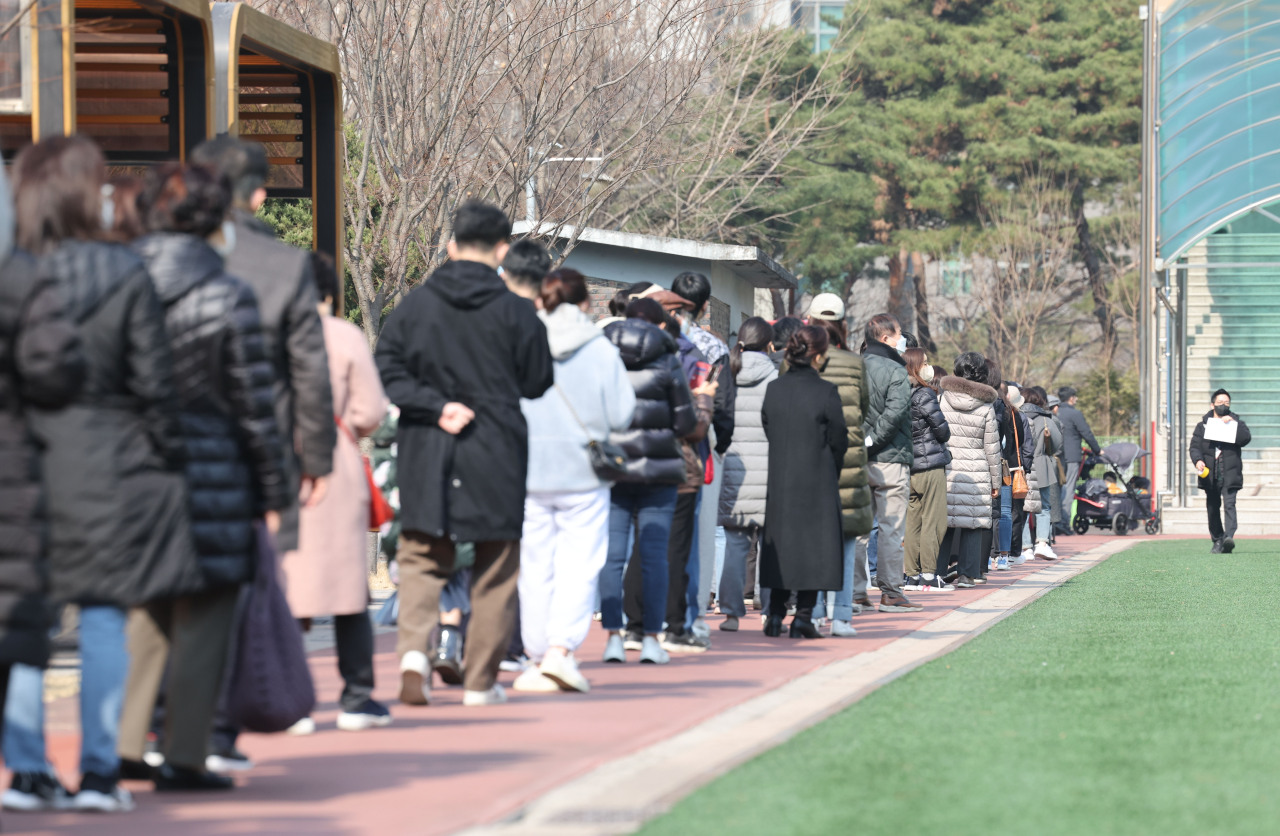 |
People line up to cast their ballots at a polling station in Banpo-gu, southern Seoul on Wednesday. (Yonhap) |
Voter turnout for this year’s presidential election reached 77.1 percent, similar to the figures from the previous election.
Nearly 8 in 10 eligible South Korean voters cast their votes to elect a new president, including ballots from two days of early voting. Approximately 34 million out of 44.2 million eligible voters ultimately cast their ballots. A final figure is expected to come out sometime Thursday.
The preliminary tally released less than two hours after polls closed at 7:30 p.m. fell short of the 80 percent mark that some had anticipated this year for the first time in 25 years, since the 1997 presidential election. Compared to the last presidential election in 2017, this year’s figure was just 0.1 percentage point short. In 2012, voter turnout came to 75.84 percent. The same figure was 63 percent in 2007.
Since the Constitution was amended for direct voting, the highest figure for voter turnout for the presidential election was seen in 1987, at 89.2 percent. Turnout, however, fell in the 1990s and 2000s, hitting the low of 63 percent in 2007.
In this year’s election, voter turnout was highest in Gwangju at 81.5 percent, followed by South Jeolla Province at 81.1 percent and North Jeolla Province at 80.6 percent.
Jeju Island showed the lowest turnout, marking 72.6 percent.
Prior to Election Day on Wednesday, South Korea saw record-breaking early voter turnout this year.
Though marred by the National Election Commission’s lack of management for COVID-19 confirmed cases and isolated voters, the round of early voting held Friday and Saturday marked 36.93 percent turnout, signaling a significant increase from the 26.06 percent in 2017.
Similar to Wednesday’s vote, South Jeolla Province showed the highest early voter turnout at 51.45 percent, followed by North Jeolla Province at 48.63 percent and Gwangju at 48.27 percent.
Gyeonggi Province showed the lowest early voter turnout at 33.65 percent, followed by Jeju Island at 33.78 percent, Daegu at 33.91 percent and Incheon at 34.09 percent.
The previous record turnout for early voting was 26.69 percent in the 2020 parliamentary elections, still relatively early in the days of the coronavirus pandemic.
This year, eyes turned to early voter turnout as both parties had encouraged their supporters to get out and vote as soon as possible.
Though the major opposition party had for years attacked the early voting system for favoring younger voters -- deemed less likely to support the conservative People Power Party -- as polls this election cycle showed more of those in their 20s backing Yoon Suk-yeol, the party encouraged voters to cast their ballots via the system, citing “COVID-19 isolation issues.”
The Democratic Party of Korea also encouraged early voting, as previous elections showed that a high turnout in early voting resulted in better outcomes for the party, including in the 2020 general election and 2017 presidential election.
By Im Eun-byel (
silverstar@heraldcorp.com)








